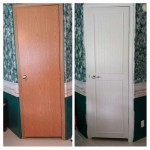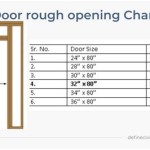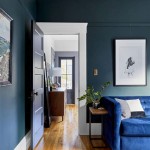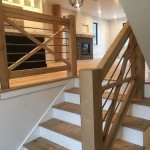How Much Should I Pay For An Interior Decorator?
Determining the appropriate compensation for an interior decorator is a complex endeavor, influenced by numerous factors including the scope of the project, the decorator’s experience level, geographic location, and the specific pricing structure employed. Understanding these elements is crucial for budgeting effectively and ensuring a mutually beneficial agreement with the selected professional.
The remuneration models in this field vary significantly. Some decorators operate on an hourly rate, while others charge a flat fee per project or employ a cost-plus percentage arrangement. Each method presents distinct advantages and disadvantages, demanding careful consideration based on the specific project requirements and the budget constraints.
Transparency and clear communication are paramount throughout the entire process. A detailed contract outlining the scope of work, payment schedule, and responsibilities of both parties is essential to prevent misunderstandings and potential disputes. Researching prevailing rates in the local market and obtaining multiple quotes from different decorators is strongly advised to establish a realistic benchmark for pricing expectations.
Understanding the Factors Influencing Interior Decorator Costs
Several key factors contribute to the overall cost of hiring an interior decorator. These factors directly influence the pricing structure and can significantly impact the final invoice. Comprehending these variables is essential for informed decision-making and effective budget management.
Project Scope and Complexity: The size and complexity of the project are primary determinants of cost. A simple room refresh involving paint color selection and furniture rearrangement will naturally be less expensive than a complete home renovation requiring structural modifications, custom cabinetry, and extensive material sourcing. The time investment required for design conceptualization, material procurement, and project management scales proportionally with the project's intricacy.
Experience and Expertise: Highly experienced and reputable decorators with a proven track record typically command higher fees than those who are just starting their careers. Their expertise encompasses not only design aesthetics but also project management skills, vendor relationships, and a deep understanding of building codes and regulations. While the initial investment may be higher, their experience can often translate to long-term cost savings through efficient project execution and avoidance of costly errors.
Geographic Location: The cost of living and market demand in a particular geographic area significantly impact interior decorator fees. Urban areas with a high concentration of affluent homeowners generally have higher rates compared to rural areas with lower demand. Furthermore, the availability of local suppliers and contractors, as well as transportation costs, can also influence the overall project expenses.
Decorator's Specialization: Some interior decorators specialize in specific design styles, such as contemporary, traditional, or mid-century modern. Others may focus on particular project types, such as kitchen renovations, bathroom remodels, or commercial spaces. Decorators with specialized expertise may charge a premium for their unique skills and knowledge in a niche area.
Materials and Furnishings: The selection of materials and furnishings significantly impacts the overall project cost. High-end designer fabrics, custom-made furniture, and imported materials will naturally increase the budget compared to readily available, mass-produced items. The decorator's ability to source materials at competitive prices and negotiate discounts with vendors can be a valuable asset in managing project expenses effectively.
Decoding Different Pricing Models
Interior decorators employ various pricing models to charge for their services. Understanding these models is essential for comparing quotes from different decorators and selecting the option that best aligns with the project's needs and budget.
Hourly Rate: This pricing model involves charging a fixed hourly rate for the decorator's time spent on the project. This model is often suitable for smaller, less complex projects with a clearly defined scope of work. The hourly rate typically varies based on the decorator's experience, location, and specialization. It is crucial to establish a clear understanding of the decorator's billing practices, including minimum billing increments and charges for travel time or administrative tasks. The potential disadvantage is that the total project cost is difficult to predict accurately, especially if unforeseen issues arise or the project scope expands.
Flat Fee: A flat fee pricing model involves charging a fixed price for the entire project, regardless of the time spent or the materials used. This model is often preferred for larger, well-defined projects with a detailed scope of work. The flat fee should encompass all aspects of the decorator's services, including design conceptualization, material selection, project management, and installation supervision. This offers greater cost predictability, but it requires a thorough understanding of the project requirements upfront. It's essential to clarify what is included in the flat fee and what constitutes additional charges.
Cost-Plus Percentage: In a cost-plus percentage arrangement, the decorator charges the actual cost of materials, furnishings, and labor plus a percentage markup on top of that cost. This model is often used for projects where the material selection is highly variable or where the final scope of work is uncertain. The percentage markup typically ranges from 10% to 30%, depending on the decorator's experience, location, and the complexity of the project. While this model offers transparency regarding the actual costs, it can be challenging to predict the final project cost accurately. It's essential to establish a clear agreement on the percentage markup and the allowable expenses.
Commission on Purchases: Some decorators receive a commission from vendors for purchases made on behalf of the client. This commission is typically built into the price of the materials and furnishings. While this model can be appealing as it may appear to reduce the direct cost to the client, it's crucial to ensure that the decorator is transparent about the commissions received and that the client is still receiving competitive pricing on all purchases. A potential conflict of interest can arise if the decorator prioritizes vendors offering higher commissions over those offering the best value for the client.
Budgeting Strategies and Negotiation Tips
Effective budgeting and negotiation are essential for managing the cost of hiring an interior decorator and ensuring a successful project outcome. Implementing proactive strategies can help control expenses and achieve the desired design aesthetic within the allocated budget.
Establish a Realistic Budget: Before contacting any interior decorators, it's crucial to establish a realistic budget for the project. This budget should take into account the scope of work, the desired quality of materials and furnishings, and any potential unforeseen expenses. Researching prevailing market rates for similar projects in the area can help establish a reasonable benchmark for pricing expectations. Be prepared to adjust the budget based on quotes received from different decorators.
Obtain Multiple Quotes: Contacting multiple interior decorators and obtaining detailed quotes is essential for comparing pricing and services. The quotes should clearly outline the scope of work, the pricing model, and any additional fees. Comparing the quotes side-by-side allows for identifying the most competitive option and negotiating favorable terms.
Clearly Define the Scope of Work: A clearly defined scope of work is crucial for avoiding misunderstandings and unexpected cost overruns. The scope of work should detail all aspects of the decorator's responsibilities, including design conceptualization, material selection, project management, and installation supervision. Any changes to the scope of work should be documented in writing and agreed upon by both parties before implementation.
Negotiate Payment Terms: Negotiating favorable payment terms can help manage cash flow and reduce the financial burden of the project. A typical payment schedule involves an initial deposit, followed by progress payments based on the completion of specific project milestones. It's essential to ensure that the payment schedule is clearly defined in the contract and that the client is comfortable with the terms.
Consider Phased Approach: For larger projects, consider implementing a phased approach to break down the project into smaller, more manageable stages. This allows for better budget control and the opportunity to evaluate the decorator's performance before committing to the entire project. Each phase should have a clearly defined scope of work and a separate budget allocation.
Prioritize Needs vs. Wants: Differentiating between essential needs and desirable wants can help prioritize budget allocations and avoid unnecessary expenses. Focus on investing in high-quality materials and furnishings for areas that receive heavy use, such as living rooms and kitchens, and consider more budget-friendly options for less frequently used spaces, such as guest rooms or storage areas.
Explore Alternative Sourcing Options: Consider exploring alternative sourcing options to reduce the cost of materials and furnishings. This may involve purchasing items from online retailers, sourcing vintage or antique pieces, or repurposing existing furniture. The decorator can assist in identifying cost-effective sourcing options that align with the desired design aesthetic.
Document Everything in Writing: Maintaining detailed documentation of all communications, agreements, and expenses is crucial for preventing misunderstandings and resolving any potential disputes. All changes to the scope of work, payment terms, or material selections should be documented in writing and signed by both parties.
By understanding the factors influencing interior decorator costs, decoding different pricing models, and implementing effective budgeting and negotiation strategies, clients can effectively manage project expenses and achieve their desired design aesthetic within a reasonable budget.

Interior Designer Cost Fees Fixr

How Much Does An Interior Designer Cost In 2024 Forbes Home

How Much Does It Cost To Hire An Interior Designer

How Much Does An Interior Designer Cost Vellum Interiors Design

Interior Designer I Salary Com

How Much Does An Interior Designer Cost Checkatrade

Interior Designer Salary How To Make More Money As A 2024

How Much Does An Interior Designer Cost In 2024 Decorilla Design

How Much Do Interior Designers Make Designer Salary Foyr

How Much Does An Interior Designer Cost In 2024 Decorilla Design
Related Posts








